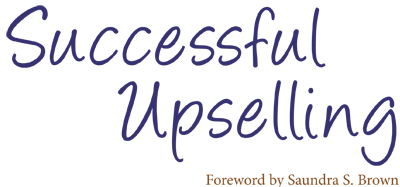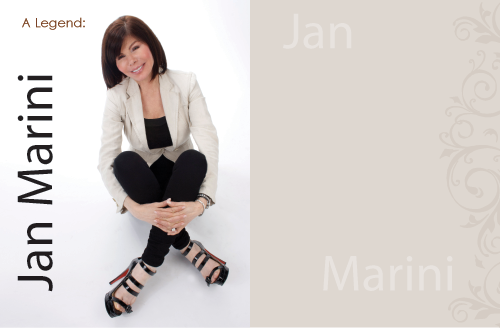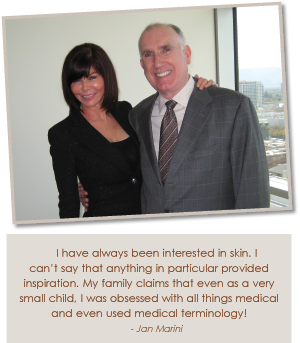Submitting grant proposals is an inexpensive way to do the projects you like. Writing proposals cost time, not money. Winning a grant is more than a financial experience. It enriches your esteem, confidence, and inner soul. The beginner level, grant seeker is recommended to seek foundation grants. The writing requirements for foundation grants are simpler than those required by federal grant applications.
The Grant Proposal
The grant proposal is the vital link connecting individual massage therapists with potential funding sources. It is the crucial document that gives the applicants the opportunity to demonstrate their writing style, project, and convince the funder to give money for various causes. The grant proposal demands a different genre of writing. It is not an English paper, a report, a novel, or a newspaper article. The grant proposal is a document of persuasion. Funders need to be persuaded in simple language, of the worthiness of the project and its potential outcome to the massage and body work community. Learning how to write persuasive grant proposals is key to winning funding. The grant proposal is carved out to be a daunting task, something that is extremely difficult and time consuming. Not really. What distinguishes one proposal from another is thoughtful, systematic, cohesive writing. The common components of a long proposal include: 1) a need statement; 2) goals and objectives; 3) methods; 4) budget; and 5) evaluation.
Addressing the following questions can help you to develop your project idea into a feasible plan.
1. What is the community need that the plan is addressing?
Answering this question develops the need statement of a proposal.
2. What would an improved community situation look like?
Answering this question develops the goals and objectives components of a proposal.
3. What can you do to improve the situation?
Answering this question develops the methods components of a proposal.
4. How will you determine the project success/failure?
Answering this question develops the evaluation component of a proposal.
5. How much will the project cost?
Answering this question develops the budget component of a proposal.
Wrapped around causes massage therapists can seek funding for the following projects (and many more):
1. Opening a spa
2. Getting a degree and paying for tuition for massage therapy school
3. Researching massage techniques
4. Travel costs related to the massage industry
5. Purchasing equipment for a spa
6. Starting a business promoting massage and bodywork
7. Traveling overseas to study massage techniques
Technical Tips for Winning Grants
Following the guidelines suffices to fill in the basic requirements of qualifying for a grant. It helps to get your foot in the door. However, when you are competing with hundreds, and in some cases, thousands of applicants, merely getting your foot in the door is not sufficient. You have to make your application stand out.
Every profession has insider rules for succeeding or failing. Often, they are not posted on any walls or written in any handbooks. Rather, they are learned through trial and error over the course of time. Given below are some guidelines that can help massage therapists to get funded. They are not hard and fast rules, but suggestions that can get you closer towards acquiring the art of winning grants. Here are some “performance-enhancing” strategies that will help you to become a successful grant seeker.
Technical Tips
• Attuning yourself With the Funder
• Follow the Guidelines
• Tone
• Table of Contents
• Pay Attention to Technicalities and Details
• Give Your Grant Proposal Personality
• Don’t Submit a Rejected Grant proposal Without Making Major Changes
1. Attuning Yourself With the Funder
“Attune” yourself with the funder. Attuning or connecting mentally with the funder refers to the way you find your voice within the proposal. It defines the way you decide to approach the proposal-- how are you going to tackle it? Put yourself in the funder’s shoes as you write the proposal. Speak to the funders in their language, not yours. Simultaneously you want to let the funders know that your project is unique. During the process of attunement you are likely to find your unique approach for the proposal. There are several ways of seeking attunement. Visiting the funder’s web site is an excellent start. Although every foundation web site is different, most of them follow similar formats and include the mission statement, previous grantees, and a home page. Read through them carefully and get a “feel” for the foundation. Note whether their style is formal, scientific/technical, or community oriented. Try to get a sense of where the funder is coming from and make a mental connection with the funding source. Then, transfer that energy into your grant application.
2. Follow the Guidelines
Guidelines are the blueprints that must be followed when preparing the grant application. Most foundations have specific guidelines that applicants are expected to follow. For example, some opt for a brief letter of inquiry (LOI) that describes the funding request, while others seek a more detailed proposal that describes the qualifications of the applicant, supporting documents, and budget. Re-read the guidelines. Check for technical requirements, writing formats, supporting materials, and deadlines.
Most foundations use a two-phase application process. In phase one applicants are requested to send a summary or abstract of the proposed project with a short proposal. The acceptance rate on the initial phase is usually low. Some foundations decline more than 70 percent of their applications during the initial phase. Those selected to phase two are required to fill out a more detailed application. If you make it to phase two your likelihood of winning a grant, although not guaranteed, is higher.
3. Tone
Keep a positive tone throughout the proposal. Avoid the following:
- Apologizing about asking for money
You do not have to feel bad about asking for money from a funding source. Foundations are set up to donate money for people like you, and therefore, there is no need to feel guilty about it. - Avoid a Tone of Arrogance
Remember- it is up to the foundation to decide to whom they award the money. They are on the higher end as far as donating funds is concerned. Demanding money arrogantly from a funder is never a good idea. Avoid a tone of arrogance in the proposal. Humility creates more positive overtones. - Shed the Ego
Avoid assuming that you are the only massage therapist that can carry out the project. By putting down others and giving the impression that you are the only one who can carry out the proposed project, is likely to deny your chances of winning a grant. Acting in isolation does not sit too well with today’s thinking. The strategy is to show how your project can complement and/or enhance existing knowledge and information. In some cases, it may be opportune to show how your project is groundbreaking. Speaking poorly of other massage therapists is risky for another reason: you never know if the organization staff or Board members may be involved with any one of them.
4. Table of Contents
When a proposal is long, i.e. over 20 pages, include a table of contents that gives the page numbers of the different sections. You may also want to consider the use of dividers and tabs to separate the sections. However, always consult the guidelines, because some funders are particular about binding requirements.
A table of contents can be provided at the beginning of the application as follows:
Introduction Page 1
Abstract Page 2
Need Statement Page 3
Methodology Page 10
Goals and objectives Page 15
Budget Page 20
Personnel Page 25
Evaluation Page 28
Bibliography Page 30
5. Pay attention to Technicalities and Details
There are standard technicalities applicants are expected to follow when applying for grants. Some foundations specify the technical requirements, while others assume applicants are already aware of them. The standard font size for most grant applications is 12. Avoid using fancy font styles such as Braggadocio, Comic Sans MS, and Harrington. Use a basic font style such as Times New Roman. Keep the typesetting plain instead of bold unless of course a title or specific word requires bold writing. Avoid ALL CAPS. Most proposals need to be double-spaced, although occasionally foundations request applicants to submit single spaced proposals as well. Do not justify the proposal. Instead align your proposal to the left.
6. Give Your Grant Proposal Personality
Instead of following the same structure followed by other applicants give your grant proposal personality. You are a special person. Every snowflake is different; every thumbprint is different. Similarly, every grant proposal is different. Translate that unique nature into your grant proposal, thereby giving it distinct personality. Be proud of your unique strengths and let them shine in your writing, while being mindful of the funder’s requirements.
7. Don't Submit a Rejected Grant Application Without Making Major Changes
If a foundation rejects you once and you would like to apply for the following year's cycle, don’t submit the rejected grant application without making major changes. Re-submitting requires more than changing the date on the cover page and submitting the same proposal that was submitted the previous year. Dress it up first. Consult the foundation before re-applying. Contact the foundation and find out how you can improve your proposal. See if you can talk to a staff officer at the foundation that can offer feedback on your application. Some foundations offer direct feedback on why the grant application was rejected. These tips can be invaluable in the revision process. If you can’t get a copy of the grant reviewer's comments then ask a veteran grant writer to look at your failed proposal. Rewrite, edit, and marinate, before delivering the final product.
Where Do You Look For Grants?
Researching the right places is a critical component of increasing your chances of winning a grant. The researching phase of grant writing is deciding where you will look for sources that are likely to fund your project. If you don’t know the right places to look, you can spend an entire lifetime hunting the wrong sources and never winning a grant. Therefore, it is crucial that right from the start you are on the right track of looking at the right places.
Following are some sources that fund massage therapists, aestheticians, nurses, body workers, skin care professionals, students in massage therapy, and Yoga practitioners, among others.
1. The American Occupational Therapy Foundation (AOTF)
http://www.aotf.org/html/general_information.html
The American Occupational Therapy Foundation (AOTF) promotes a society in which individuals, regardless of age or ability, may participate in occupations of their choice that give meaning to their lives and foster health and well-being. Through its dedication to scientific inquiry, education and leadership development, the American Occupational Therapy Foundation pays tribute to the significance of everyday activities enabling those who face personal challenges to realize their full potential in society.
Each year The American Occupational Therapy Foundation offers scholarships to students and professionals in occupational therapy. Scholarships are offered to occupational therapy students at the associate, baccalaureate, professional masters, and doctorate levels. Usually the grants range from $375-$5,000. They are given to students pursuing entry-level occupational therapy degrees. In addition six scholarships are offered to occupational therapy practitioners who already have an entry-level degree and are now pursuing a post-professional degree on occupational therapy or related areas.
Contact:
The American Occupational Therapy Foundation
4720 Montgomery Lane
P.O. Box 31220
Bethesda, MD 208224-1220
E mail: This email address is being protected from spambots. You need JavaScript enabled to view it.
3. American Physical Therapy Foundation (APTA)
www.apta.org
The American Physical Therapy Association (APTA) is a national professional organization representing more than 66,000 members. Its goal is to foster advancement in physical therapy practice, research, and education. The mission of the American Physical Therapy Association is to further the profession's role in the prevention, diagnosis, and treatment of movement dysfunctions and the enhancement of the physical health and functional abilities of members of the public.
The purposes of research grants are to fund projects to evaluate the effectiveness of physical therapist interventions within any discipline relevant to physical therapy. The maximum grant amount is $40,000.
The primary objectives of the grant programs are:
1. Assisting clinicians, researchers, and scholars
2. Expanding funding for emerging researchers
3. Supporting clinically relevant research
4. Strengthening the foundation's capacity to promote the profession's research agenda
Current grant opportunities include:
1. Magistro grant
2. Research grant
3. Second step grant
Directions to the web site: Click Research. The research site lists grant funding availability for estheticians, massage therapists, and skin care professionals.
Contact:
The American Physical Therapy Association (APTA)
1111 North Fairfax Street
Alexandria, VA 22314
Phone: 1-800-999-2782
Preethi Burkholder is a grant consultant and submits grant proposals on behalf of individuals and organizations. Recently she won a grant to start an Ayurveda spa in Sri Lanka. She has a Master’s degree from Tufts University, Massachusetts. Burkholder can be reached at This email address is being protected from spambots. You need JavaScript enabled to view it..





 Those who know Jan Marini refer to her as a visionary. While Jan might agree in principle, she sees this characterization as both a strength and a weakness. She envies those who are able to savor the moment. Where others view life in snapshots that capture real time, Jan sees broad borderless landscapes and endless possibilities. She does not see a product, she sees a business and in that same instance her mind is flooded with the business plan and all the accompanying details. Even when she is not envisioning empires, she is never satisfied with the status quo.
Those who know Jan Marini refer to her as a visionary. While Jan might agree in principle, she sees this characterization as both a strength and a weakness. She envies those who are able to savor the moment. Where others view life in snapshots that capture real time, Jan sees broad borderless landscapes and endless possibilities. She does not see a product, she sees a business and in that same instance her mind is flooded with the business plan and all the accompanying details. Even when she is not envisioning empires, she is never satisfied with the status quo.